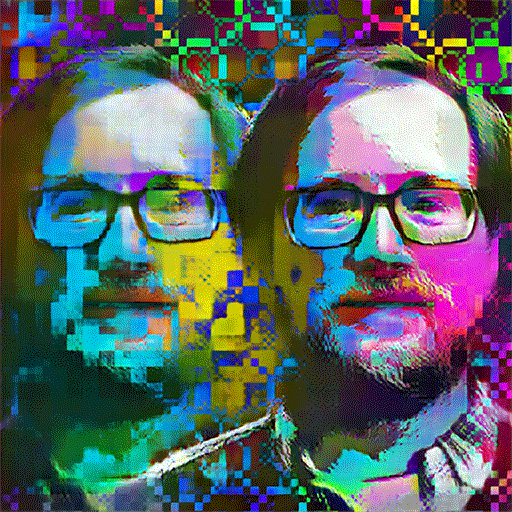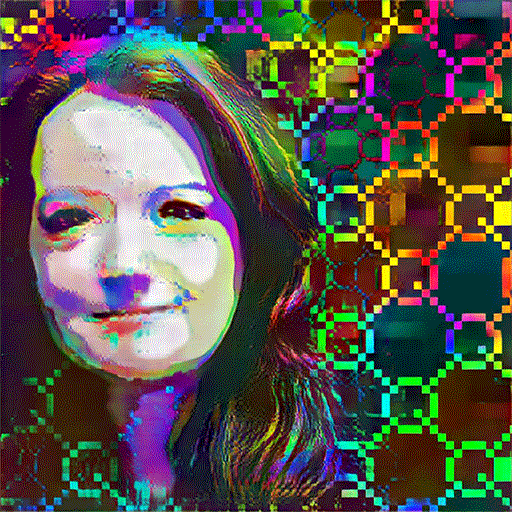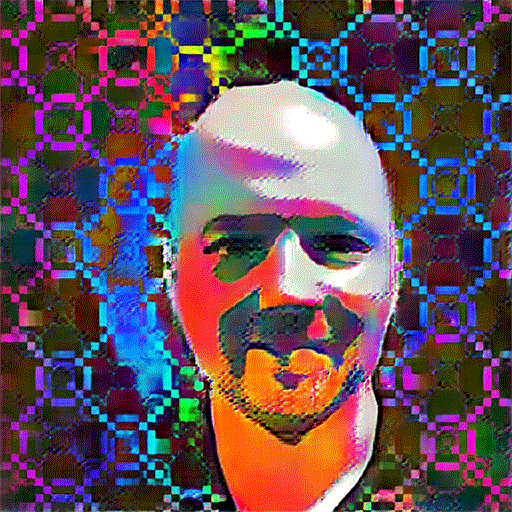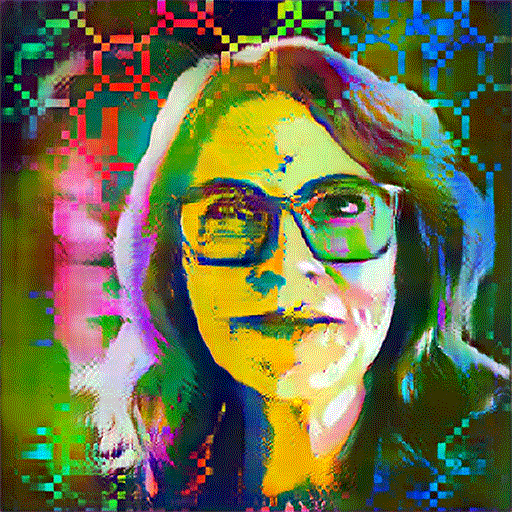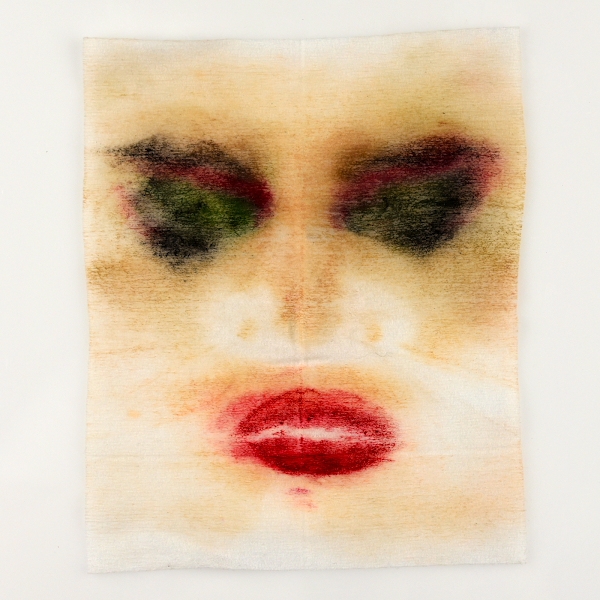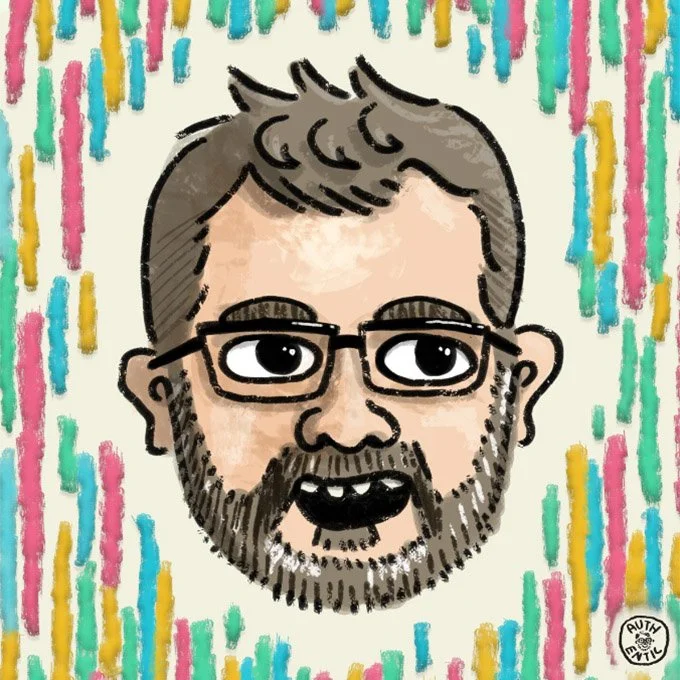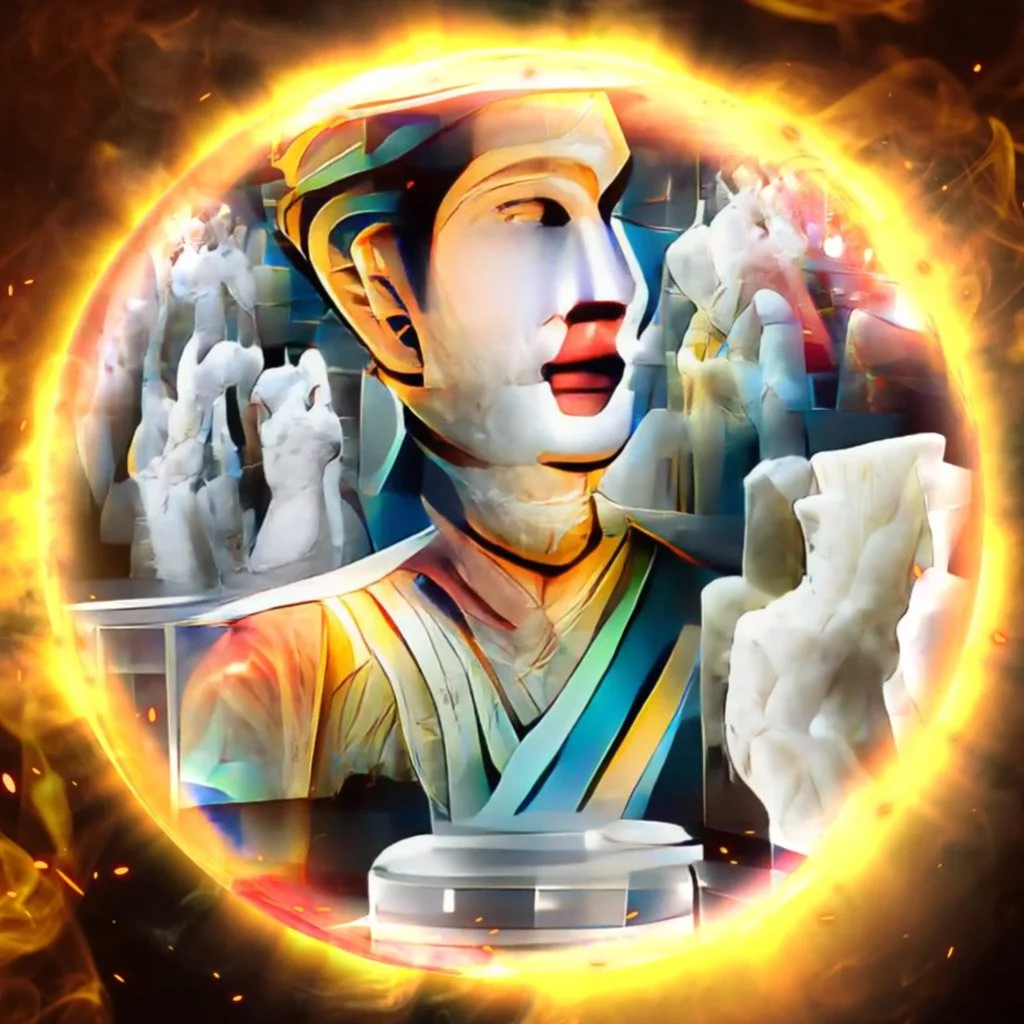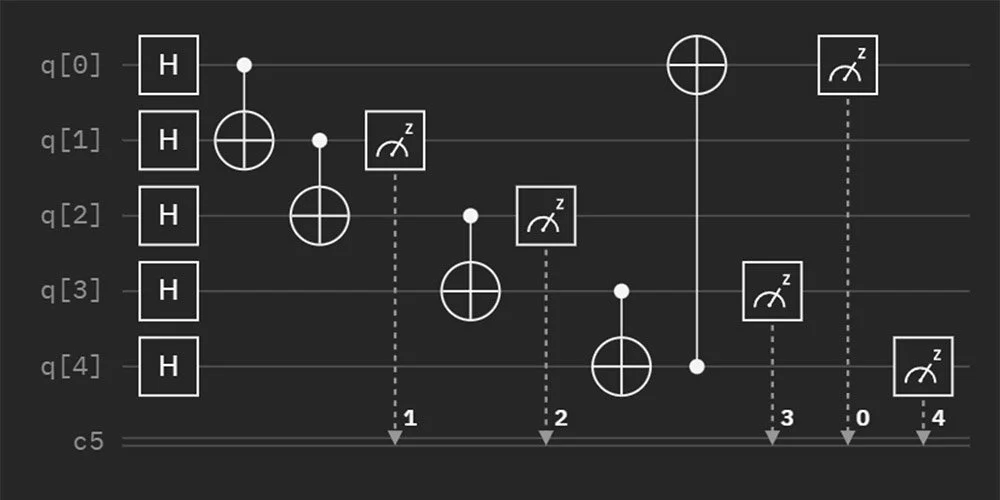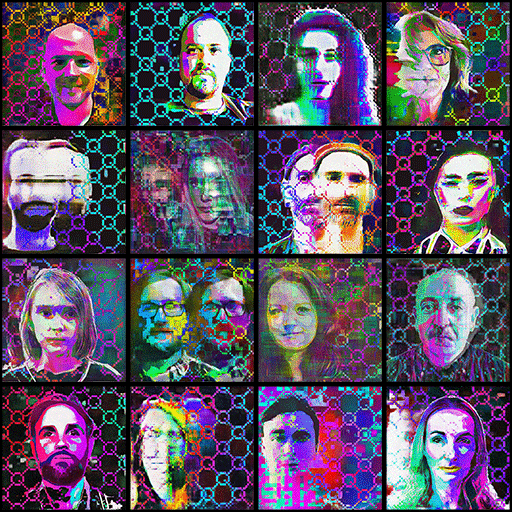Quantum Portraits
portraits procedurally generated from the indeterminacy of the atom
Bryan Brinkman
Ashley Brinkman
MLOdotArt (Martin)
Anne Spalter
“We are all only probably here.”
I spend much too much time wondering if I have free will. The universe around us is ruled by the laws of physics and these laws are unbending. This forces me to question whether every decision that I have ever made wasn’t actually a decision, but simply a biochemical reaction rigorously following these laws. We are creatures of habit after all, and it has always been unclear to me how deeply these habits run.
This has always been unsettling.
But then I discovered a part of our universe that is not deterministic. At the miniscule scale of quantum mechanics everything exists only as a probability. Subatomic particle don’t even have fixed locations. They exist as a range of possible locations and the only way to know exactly where they are is to observe them directly. (see the double-slit experiment) But even this only tells you where they were at the precise moment of the measurement, because afterwards they return to being a probability. This is fascinating to me for so many reasons, least of which is the realization that my own mind doesn’t have a fixed permanence. It is made up of subatomic particles that only exist as probabilities. Weird, but I at least prefer this kind of consciousness to one without free will.
These portraits are an attempt to capture this indeterminacy, because that is us as we truly are.
By using actual quantum computers and artificial intelligence to procedurally generate these portraits, they come out resembling the quantum phenomenon occurring within us. Like the atoms observed to generate them, the faces move in and out of existence, only probably there, and the moment we observe and recognize them, they reveal themselves to be elsewhere entirely.
Like us.
These are Quantum Portraits in creation, form, and function.
How to get a Quantum Portrait
Quantum Portraits are not for sale. The only way to get one is by being referred by a holder, then trading a portrait with me. See details here.
1: Quantum faces are on a Sovereign Contract and only available by trading a portrait with me.
2: To get one you will also need to be referred by a current Quantum Portrait holder.
If you ARE a holder and would like to make a referral, introduce me to a subject.
If you ARE NOT a holder, reach out to a holder you know and ask for a referral.
3: All Quantum Portraits must be of the subjects actual face and made after have sitting with me.
A 5 min Video Conference is all that is needed though I talk a lot and wouldn’t mind chatting longer.
4: Once complete, they will be released in batches, at which point they will be airdropped to the subject.
5: If you need some ideas on what to trade see below. Can be anything as long as it can be loosely interpreted as a portrait.
Trading
Am open to just about any trade of a portrait and have already been amazed by the generosity shown in the alpha drop. Just check out some of these examples below.
OtherFaces #087 by Mikey Woodbridge traded by Mikey Woodbridge
Pindar Van Arman by Bryan Brinkman traded by Bryan Brinkman
Fewocious “Self Portrait” by Sketcha traded by Lamorak
Legendary Dream Capsule by Obvious traded by Tytus
I look forward to all the trading that will happen with these and making 256-512 Quantum Portraits over the next year.
It is an honor to work with each and everyone of you on these, and look forward to seeing where this ends up.
See the collection on opensea here: https://opensea.io/collection/quantumportraits
See the custom sovereign contract with individual image hashes here: https://etherscan.io/address/0x6d2652e02ef792c651c883730dbbe47e7459c9a7#code
Reach out with any questions.
Thanks,
Pindar Van Arman
WARNING
-
Only read onward if you enjoy being bored
-
WARNING - Only read onward if you enjoy being bored -
Some more details and a deeper dive into the tech for those interested.
History
Before AI and GANs were big on the blockchain, I was using them to direct the brushstroke of my painting robots. Have been making painting robots for almost 20 years, but the first time my AI work was internationally recognized was in 2014 at the Barbican DEV-Art Competition. The first time my GANs were recognized was when my AI Imagined Faces series was awarded first place at RobotArt 2018. Have always pushed creative technology and am always looking for the next interesting innovation in generative art.
After searching for years, I have finally found what I think will be the next trend. Quantum Computers will soon be as important to AI and generative art as GANs are today. The only problem with widespread use, however, is that only a handful of Quantum Computers exist. Furthermore, they are hard to access due to the long queues of academics running research on them. Despite these limitations, I have found a way to harness some of their most important functions with this new Quantum Portraits series.
An IBM Quantum Computer
Each of these portraits were procedurally generated by a quantum computer and run through my AI processes. The big question is:
Why is Quantum Physics Important to Digital Art?
The only place where random things occur is on an atomic level, everything else is completely deterministic. Classical computers are a prime example of determinism and will give the same result over and over again when creating generative art. While it may appear that a piece of generative art is unique, the algorithms rely on a pseudo random seed that when used again will create the exact same artwork repeatedly. One of the most valuable aspects of traditional art is that the physicals are unique, and unfortunately uniqueness is impossible with the way we currently create generative art.
Conversely, nothing is certain on the quantum level and everything produced from it will be as unique as a hand painted canvas. When you dive into quantum mechanics, you realize that everything in our universe exists only as a probability. And these probabilities only resolves themselves when observed, and after being observed, return to chaos. The works in this series take advantage of this to be an embodiment of quantum physics and the next step in computing, generative art, and our understanding of AI. While classical computers are deterministic, Quantum computers and observations of atoms in them are truly random, making them that much more unique as pieces of art.
What Exacly is being Procedurally Generated?
I am still learning to program on Quantum Computers but to give you all an idea of how different the approach is, here is a circuit that I wrote to be used by a 5 qubit machine. 5 qubits means there are 5 atoms in the Quantum Computer which can be seen as q[0]-q[4] on the left.
This simple quantum circuit puts each of the five atoms into perfect superposition in a maximally entangled state and then measures each qubit.
What does this mean?
Being entangled, means that all of the qubits are now linked and lockstep with one another. If you change one, the universe changes them all. Furthermore, when you measure one you are measuring them all.
Being in perfect superposition means that they randomly return a value of [0] about half the time and [1] the other half. The fact that results are not perfectly split between [0] and [1] comes from noise in the system which is another interesting aspect of quantum computing.
But as I describe this circuit, please note that I could also be completely wrong about any and all of this because this is at the edge of my understanding. So without going into too much more confusing details, values taken from this quantum circuit and several others were used to procedurally generate thousands of images where the background, patterns, positions, and colors were all determined by the measurement of the qubits (atoms).
These images were then fed into several of my AI processes to resolve and create a portrait. The portrait itself attempts to visually capture the quantum indeterminacy of the whole process.
In them you can see many of the markers of quantum mechanics including superposition, entanglement, interference, and noise.
I am still trying to understand the significance of all this and welcome discussion. Get in touch with any ideas.

